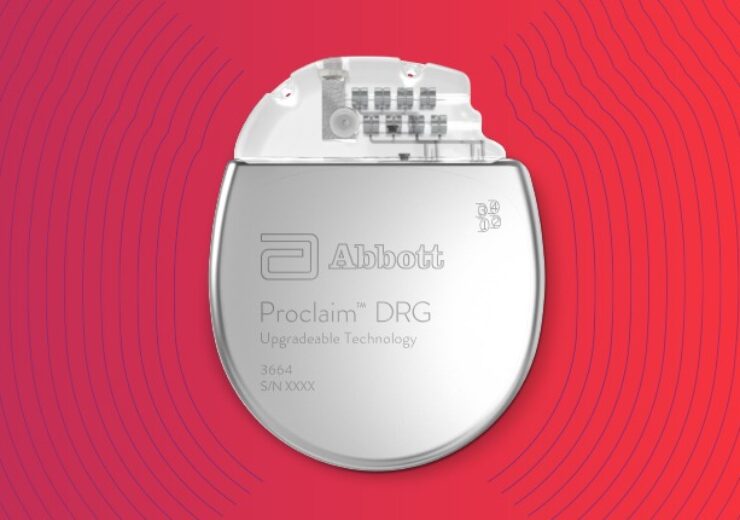Proclaim is an FDA-approved DRG technology that provides targeted relief for people with complex regional pain syndrome (CRPS), a rare and painful condition characterised by a continuous or intermittent burning, stinging, or tearing sensation

DRG is a life-changing technology for chronic pain. (Credit: Abbott)
Abbott has received the US Food and Drug Administration (FDA) approval with expanded MRI labelling for its dorsal root ganglion (DRG) stimulation therapy, Proclaim.
The expanded FDA approval allows the Proclaim DRG neurostimulation system to provide full-body MRI scans of patients, while they are implanted with the device.
Abbott said its Proclaim is the only FDA-approved DRG technology to provide targeted relief for people with complex regional pain syndrome (CRPS) types 1 and 2 of the lower limbs.
CRPS is a rare and painful condition characterised by a continuous or intermittent burning, stinging or tearing sensation, found to be extremely painful than childbirth or amputation.
Its Proclaim DRG stimulation can be an effective option for people who suffer from CRPS and struggle to control the pain, said the medical device maker.
Pedro Malha, vice president of Abbott’s neuromodulation business, said: “As we continue to work holistically across chronic pain care, we’re excited to see this new MRI expanded indication for our proprietary and unique Dorsal Root Ganglion Stimulation therapy become another valuable tool in the hands of treating physicians helping people get back to living a life on their terms.”
In a separate development, Abbott has completed the first procedures using its new Volt Pulsed Field Ablation (PFA) System to treat abnormal heart rhythms, such as atrial fibrillation (AFib).
Traditionally, patients requiring a cardiac ablation procedure to treat conditions like AFib receive radiofrequency (RF) ablation, which uses heat or cryogenic ablation.
In contrast to RF, PFA leverages high-energy electrical pulses to rectify abnormal heart rhythms, without damaging adjacent tissue in patients with complex disease or anatomy.
The initial-generation PFA systems required multiple ablations to effectively treat targeted tissue, with the catheter positioned in several locations.
Abbott said that its Volt PFA System will address the limitations by pairing its balloon-in-basket catheter with its EnSite X EP System, a heart mapping system to position tools in the heart.
The EnSite X mapping system provides clear visualisation that guides physicians to precisely identify a more accurate position where the Volt PFA Catheter is to be placed.
Recently, Abbott treated more than 30 patients in Australia, as part of a pre-market clinical study to assess the safety and effectiveness of the Volt PFA System.
The US medical device company anticipates a US FDA Investigational Device Exemption (IDE) approval for a clinical trial of the Volt PFA System in the first half of this year.
